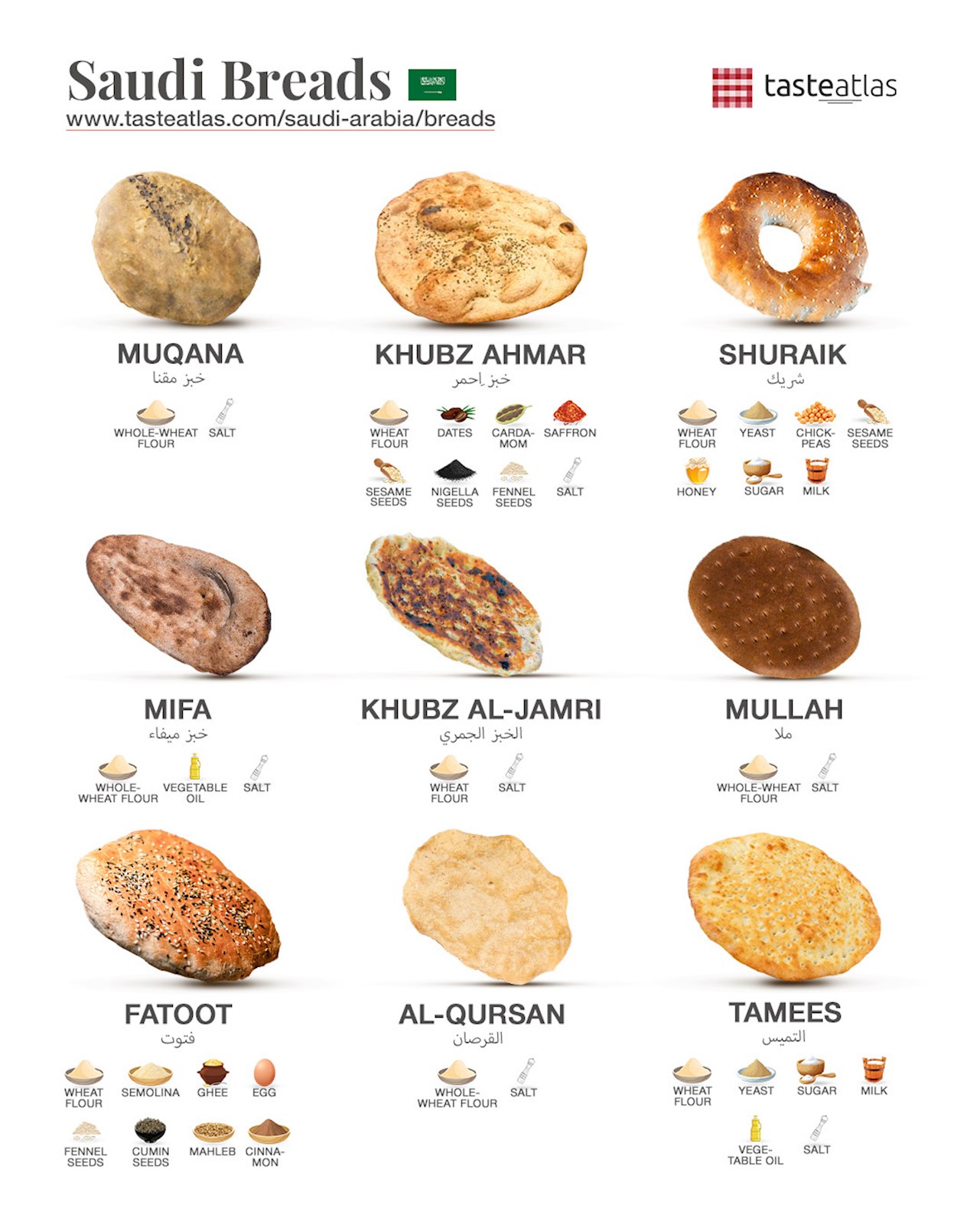Saudi Arabian cuisine is full of diverse flavors, ingredients, and traditions that have been passed down through generations. Among the many culinary delights, the diverse array of traditional breads holds a special place. These breads, each unique in preparation and flavor, are not just a staple in the Saudi diet but also a reflection of the region's heritage and hospitality.
From everyday meals to festive occasions, bread in Saudi Arabia is more than just sustenance - it's a symbol of community and cultural identity. These are nine unique, traditional Saudi breads that are part of almost every meal.
Muqana
 Credits: Saudi Culinary Arts Commission
Credits: Saudi Culinary Arts Commission
Muqana, a staple in the Al-Bahah region, is a traditional bread made with whole wheat flour, salt, and water, and once kneaded, it is left to ferment before baking. Traditionally, approximately 7 kilograms (15 lbs) of flour are needed, and a group of women kneads it. The bread is baked, cleaned from ashes and cut into smaller portions, called shitra. It is served with ghee, honey, or meat broth.
Khubz ahmar
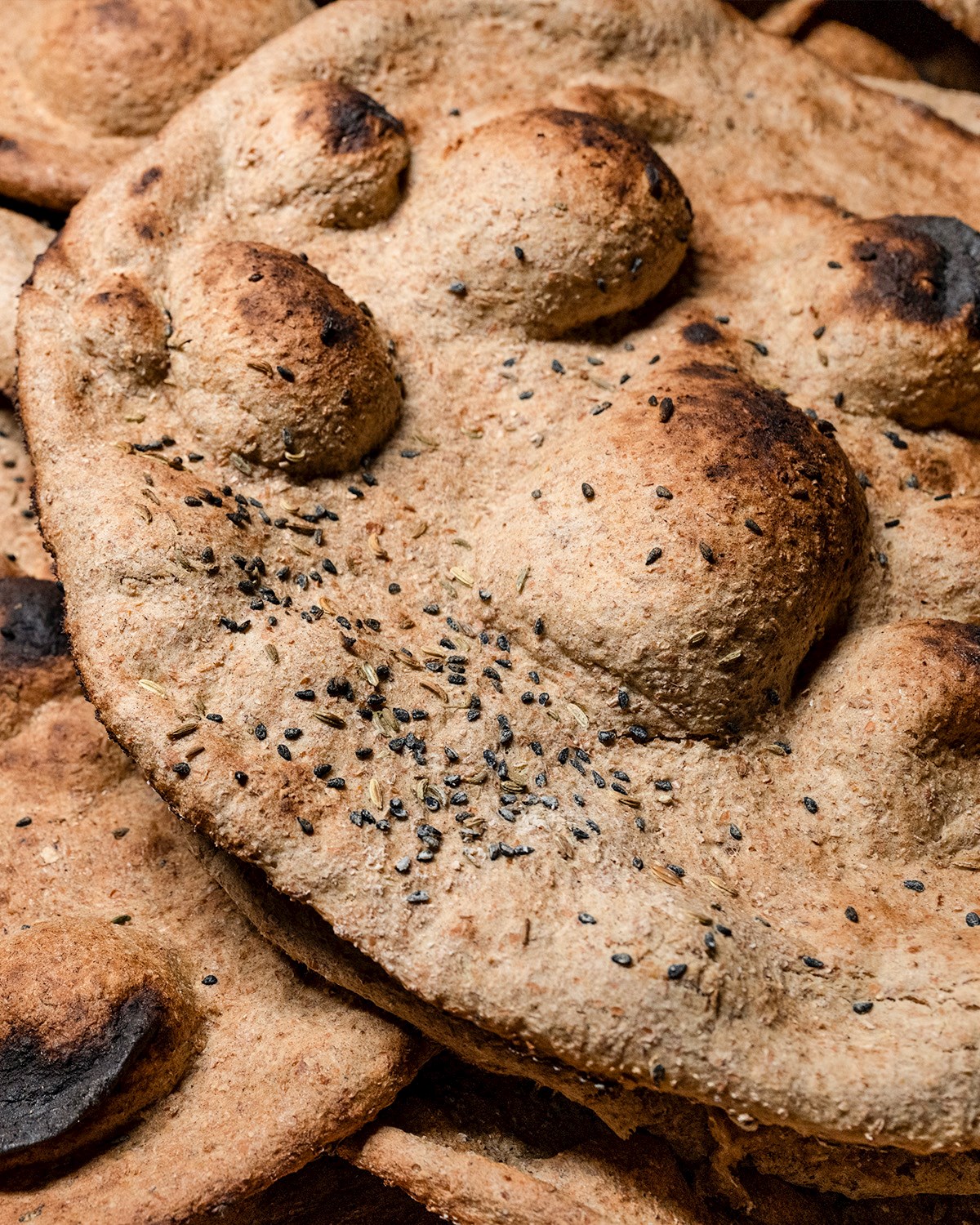 Credits: Saudi Culinary Arts Commission
Credits: Saudi Culinary Arts Commission
Khubz ahmar, commonly known as "red bread" in Arabic, is a traditional Saudi bread from the al-Ahsa Governorate, distinguished by its reddish hue. This color is typically achieved by incorporating dates into the dough. Khubz ahmar is often enjoyed as part of traditional meals, served alongside a variety of dishes such as stews, dips, and salads.
Shuraik
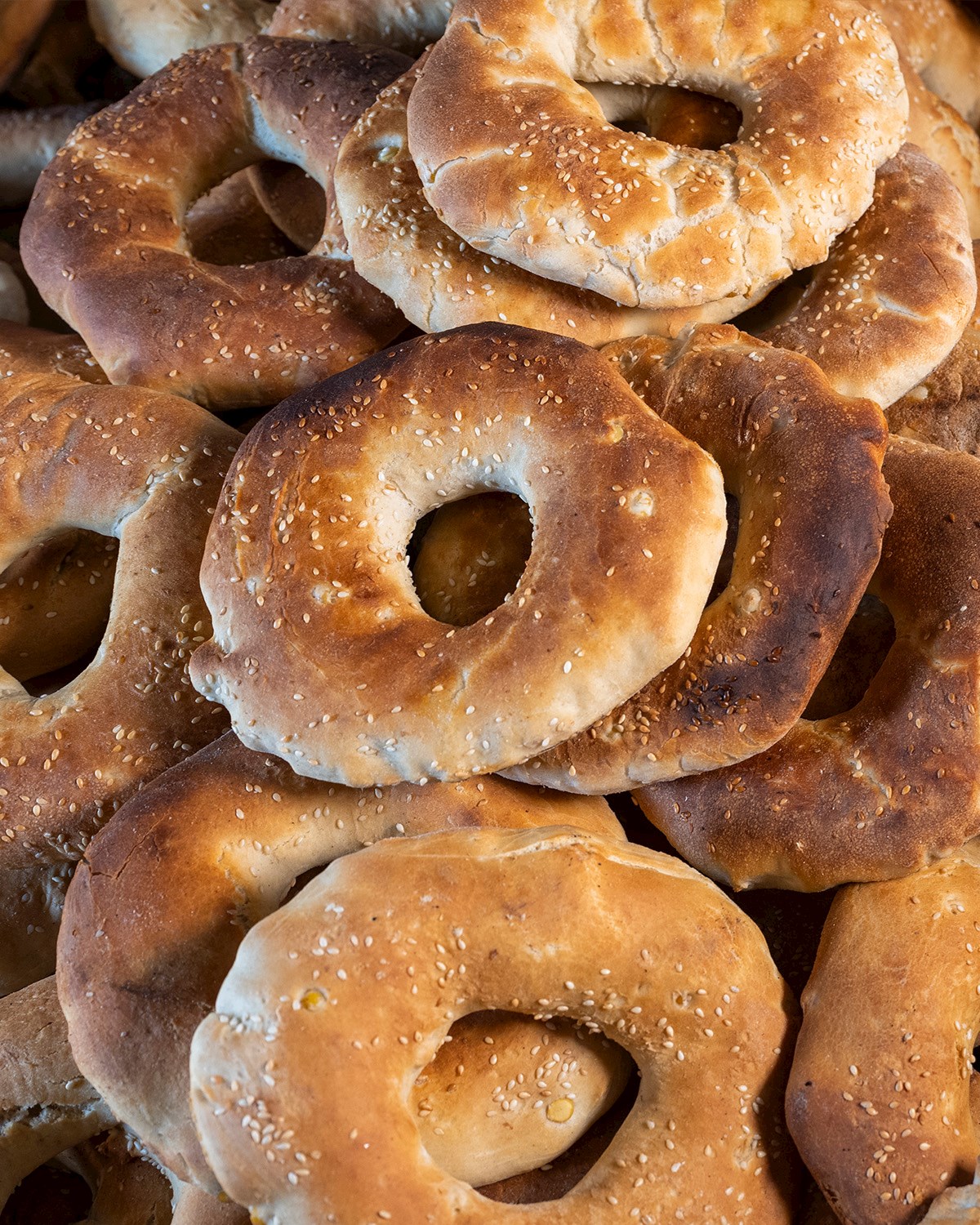 Credits: Saudi Culinary Arts Commission
Credits: Saudi Culinary Arts Commission
Shuraik is a traditional Saudi bread known for its soft, slightly sweet flavor and fluffy texture, making it a favorite for both everyday meals and special occasions. The dough for shuraik bread typically includes basic ingredients such as flour, water, yeast, sugar, salt, milk to enrich the texture and flavor, and crushed chickpeas. The inclusion of sugar gives the bread its characteristic slight sweetness, and it is additionaly brushed with mixture of milk and honey. Its mild sweetness makes it versatile, allowing it to be paired with both savory and sweet accompaniments. It is commonly enjoyed with butter, honey, or cheese for breakfast, and can also be served alongside soups, stews, or grilled meats.
Mifa
 Credits: @hihome.sa
Credits: @hihome.sa
Mifa is a traditional Saudi bread from the 'Asir region. This bread is typically prepared using simple ingredients like flour, water, salt, and oil, but what sets it apart is the way it is cooked, traditionally using a "mifa", which is a large oven heated by firewood. Mifa bread is a versatile staple in Saudi cuisine and is often served with a variety of dishes. It pairs well with stews, soups, and salads, and can also be enjoyed on its own or with dips and spreads.
Khubz al-jamri
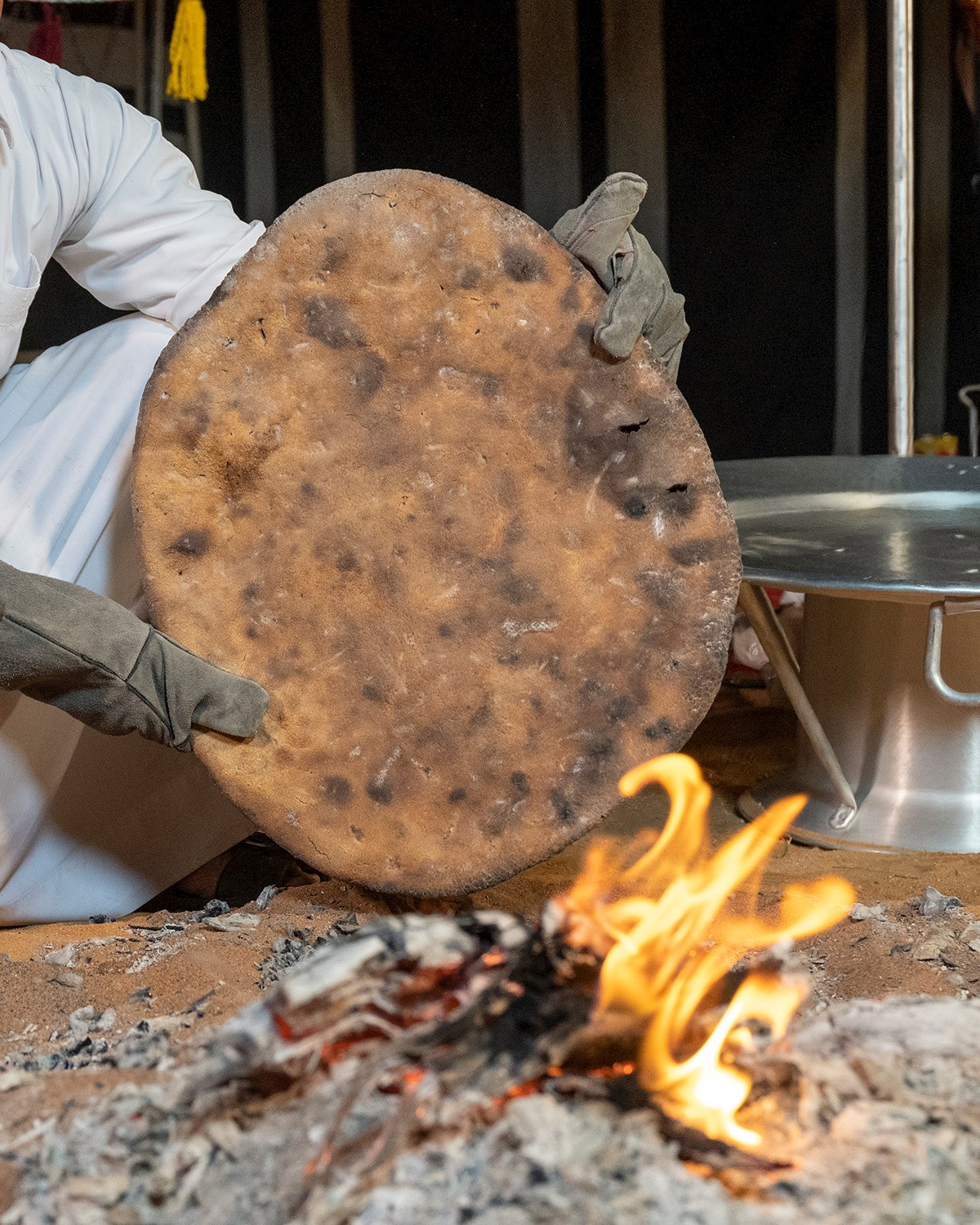 Credits: Saudi Culinary Arts Commission
Credits: Saudi Culinary Arts Commission
Khubz al-jamri is a traditional type of bread in Saudi Arabia, especially popular in the southern regions. The dough for khubz al-jamri is typically made from simple ingredients such as wheat flour, water, and salt. The dough is kneaded and then left to rise. Once ready, small portions of the dough are flattened into round shapes and placed directly onto charcoal ashes. The bread cooks quickly, developing a distinct smoky flavor and a slightly charred, crispy exterior while remaining soft on the inside. Khubz al-jamri is often enjoyed as part of a traditional meal and is commonly served with a variety of dishes such as grilled meats, stews, and vegetable dishes.
Learn more about Khubz al-jamri
Mullah
 Credits: Saudi Culinary Arts Commission
Credits: Saudi Culinary Arts Commission
Mullah bread is a traditional Saudi flatbread known for its soft, pillowy texture and slightly chewy consistency. It is typically made from basic ingredients such as flour, water, salt, and sometimes a bit of sugar or oil to enhance its texture and flavor. Mullah bread is versatile and often used as an accompaniment to a variety of dishes, including stews, soups, and grilled meats. It can also be enjoyed on its own, dipped in olive oil or spread with butter and honey.
Fatoot
 Credits: Saudi Culinary Arts Commission
Credits: Saudi Culinary Arts Commission
Fatoot is a traditional Saudi Arabian bread originating from the Medina region. It's a type of unleavened bread made primarily from wheat flour, water, and salt, and it's typically baked on a hot griddle or saj, a convex metal cooking surface. The bread is thin, soft, and flexible, making it a perfect accompaniment for various dishes or to be enjoyed on its own.
Al-Qursan
 Credits: Exploring World Food
Credits: Exploring World Food
Al-Qursan is a traditional Saudi Arabian bread, especially popular in the central regions. Made from whole wheat flour, water, and salt, it is typically baked on a hot metal plate or griddle, resulting in a thin, crispy texture. This bread is commonly served with stews, meats, and vegetables, traditionally soaked in the stews, absorbing the rich flavors and becoming soft and flavorful.
Tamees
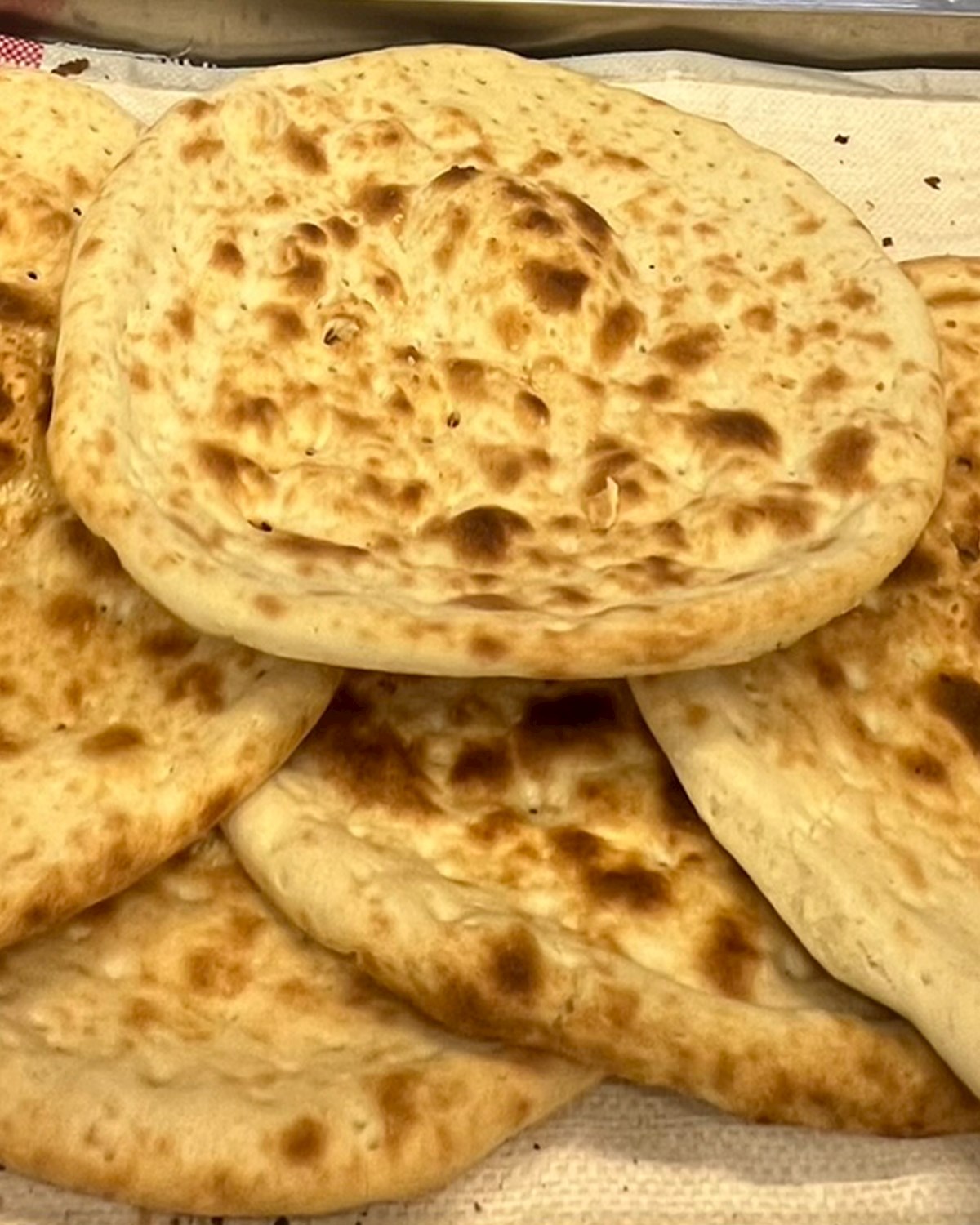 Credits: Saudi Culinary Arts Commission
Credits: Saudi Culinary Arts Commission
Tamees is a traditional flatbread that is widely popular in Saudi Arabia, and is known for its soft, fluffy texture and slightly chewy consistency. It is typically made from basic ingredients such as wheat flour, water, yeast, and salt, with addition of milk to enrich the dough. Tamees is often enjoyed with a variety of accompaniments. It is commonly served with beans, cheese, or honey for breakfast, and it can also be paired with savory dishes such as meat stews and curries.
List of all Saudi Arabia breads
